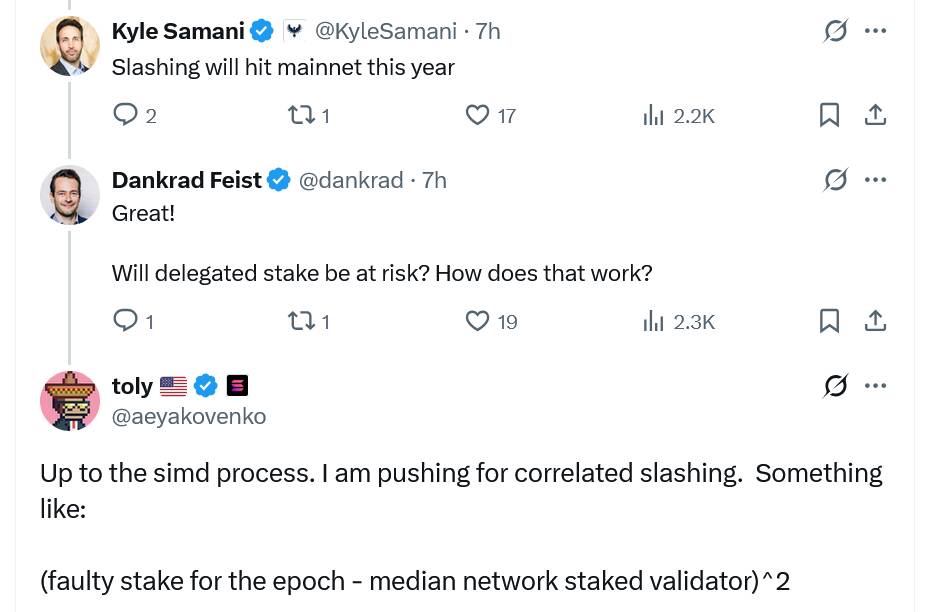The cryptocurrency landscape has recently witnessed a dramatic shift, as the Solana network momentarily overtook Ethereum in total staked value of their native tokens, SOL and ETH. As of April 20, over $53.9 billion worth of SOL was staked by approximately 505,938 unique wallet holders, offering an attractive annualized return of 8.31%, according to blockchain data. This milestone has ignited discussions about the implications for Solana’s future—whether this moment is a bullish trend or a bearish signal for the network.
While SOL’s price performance has been noteworthy, with its valuation against ETH increasing tenfold in the past two years, some analysts are raising concerns about the health of Solana’s decentralized finance (DeFi) ecosystem. The high staking returns for SOL users may be diverting attention and investment away from other DeFi activities, such as providing liquidity in decentralized exchanges where potential returns are comparatively lower. This situation has led critics to argue that with 65% of Solana’s market cap staked, it diminishes the utility of the token, which could create negative long-term effects.
Data from DefiLlama illustrates this trend further, showing that Ethereum remains the dominant force in the DeFi sector, with a total value locked (TVL) of about $50.4 billion compared to Solana’s $8.85 billion. Furthermore, the Ethereum network boasts a significantly higher number of validators—over 1.06 million—compared to Solana’s 1,243, adding weight to Ethereum’s infrastructure stability and security.
“Solana having 65% of its market cap staked means there’s no other use of its token, it’s actually bearish,” stated JC, a developer at Builda Protocol.
Compounding this complexity, experts have voiced concerns surrounding the method of staking on Solana. An Ethereum researcher noted that without a robust punishment mechanism for malicious actions—commonly referred to as “slashing”—the security of the Solana network may be compromised. Solana Labs has acknowledged this gap and is working on implementing a more comprehensive slashing solution later in the year.
In contrast, Ethereum developers are exploring avenues to decentralize staking further, particularly in light of the challenges surrounding the hefty 32 ETH minimum required to run an independent validator. This has led to a notable trend toward liquid staking protocols, with the Lido platform capturing an impressive 88% share of Ethereum’s liquid staking market, raising further concerns about centralization.
As these developments unfold, both the Solana and Ethereum ecosystems are navigating a complex crossroads, with high staking returns, DeFi growth potential, and network security all playing crucial roles in the evolving narrative of the cryptocurrency industry.
Analysis of Solana’s Staking Surge and Its Implications
The recent surpassing of Ethereum in total staked value by the Solana network has generated significant attention and debate within the cryptocurrency community. Here are the key points regarding this event and its potential impact on readers:
- Staked Value Comparison:
- Solana briefly overtook Ethereum in total staked value, with over $53.9 billion in SOL staked.
- Ethereum currently has $53.93 billion in staked ETH tokens, highlighting a competitive landscape.
- Annualized Returns:
- SOL stakers enjoy an 8.31% annualized return, significantly higher than ETH’s 2.98%.
- This higher return may discourage users from participating in DeFi activities, impacting overall ecosystem growth.
- Liquidity in DeFi:
- Liquidity in DeFi is comparatively lower for Solana, with just $7.22 billion liquid staked SOL versus $21.5 billion in liquid staked ETH.
- Solana’s dominance in staked value (65% of market cap) raises concerns about the token’s utility in DeFi.
- Validator Security Concerns:
- Solana has far fewer validators (1,243) compared to Ethereum (1.06 million), which raises questions about network security.
- Critics argue that current Solana staking lacks proper mechanisms to penalize bad actors, undermining economic security.
- Future Improvements:
- Solana Labs is working on implementing a slashing mechanism to enhance network security.
- Ethereum developers are also exploring decentralization of staking to address issues in the liquid staking market.
The discrepancies in staking structures and returns between Solana and Ethereum could significantly influence investor decisions and strategic movements within the crypto market.
Solana vs. Ethereum: The Implications of Staking Dynamics
The recent development where Solana’s network overtook Ethereum briefly in total staked value has ignited discussions within the crypto community, with implications that extend beyond mere statistics. In this fast-paced digital landscape, understanding the nuances of Solana (SOL) and Ethereum (ETH) staking is vital for both investors and developers who are navigating this evolving space.
Comparative Advantages: Solana’s high staking return of 8.31% offers a significant competitive edge over Ethereum’s 2.98%. This attractive yield has undoubtedly bolstered SOL’s staking appeal, drawing in nearly 506,000 unique wallet holders. Furthermore, with an enticing price ratio surge since June 2023, SOL’s performance can lure those who prioritize yield over other types of DeFi engagement. This could potentially benefit newer investors or those looking for a mainstay investment yielding better returns.
However, the flip side includes an alarming trend: the “risk-free” staking returns may result in a pullback from DeFi activities on Solana. Influential voices in the industry warn that when a large portion of SOL is staked—about 65%—there’s little incentive left to engage in liquidity projects or lend, which stifles Solana’s DeFi ecosystem. This reality creates a challenge for developers aiming to innovate within the Solana network, as fewer active participants in DeFi can lead to a stagnant growth environment, especially when compared to Ethereum’s robust DeFi landscape, which still dominates with $50.4 billion in total value locked.
Disadvantages: Despite its initial surge in the staking race, Solana faces significant concerns regarding its security mechanisms. Detractors, including Ethereum researchers, highlight that Solana’s staking lacks rigorous governance due to an absence of slashing penalties for misconduct, posing a threat to the network’s integrity. Until Solana rolls out its anticipated slashing mechanisms later this year, confidence in the network’s long-term security could be diminished among potential investors or developers who prioritize ecosystem robustness.
Meanwhile, Ethereum’s established network of over a million validators showcases a more robust and decentralized staking environment. This creates higher barriers for attacks and a more transparent investment landscape, which may resonate better with institutional investors or those seeking long-term stability within the blockchain space.
The findings leave both networks at a crossroads: Solana promises lucrative staking for the individual investor but risks slowing DeFi innovation, while Ethereum retains its DeFi leadership and security at the cost of lower yields. For investors focused solely on ROI, Solana offers a compelling option, yet those interested in a holistic ecosystem with growth potential may find themselves more aligned with Ethereum’s comprehensive approach, ultimately leading to differing outcomes in user engagement and market dynamics.

















